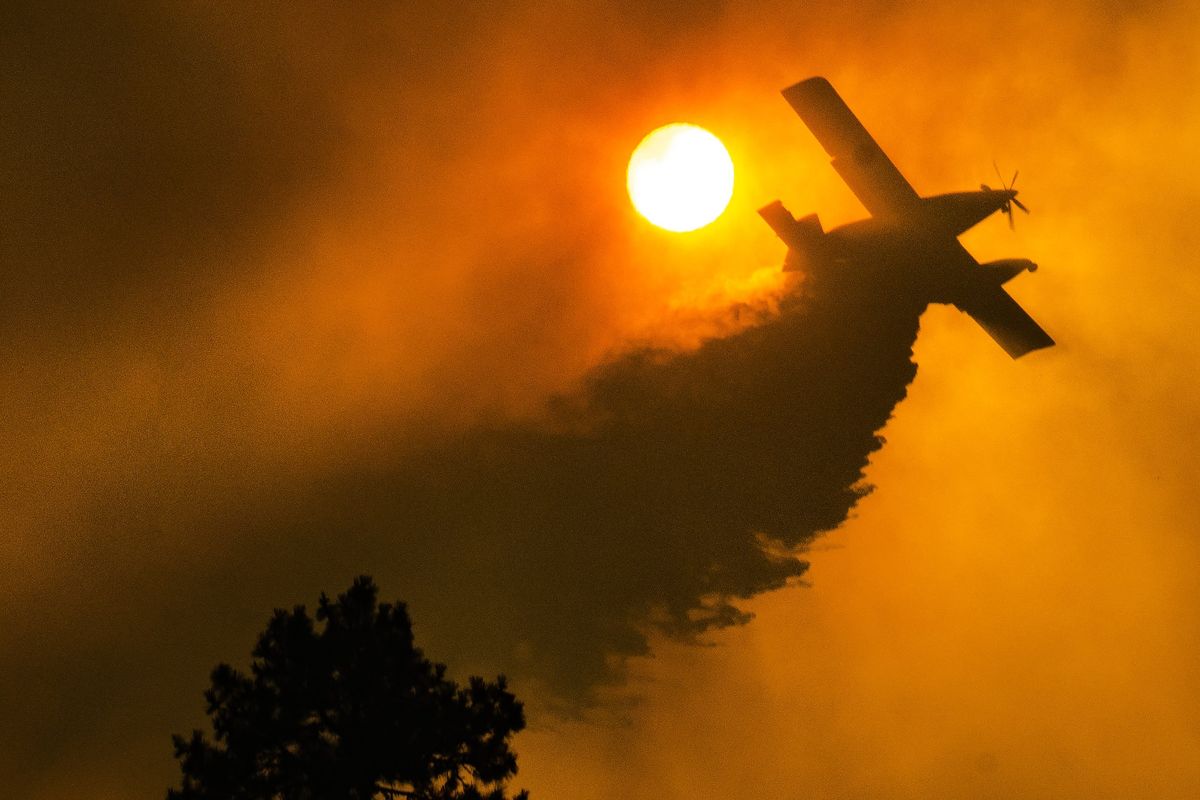Fire officials use education to help prevent wildfire and mitigate the damage they cause

In the midst of wildfire season, Spokane Valley Deputy Fire Marshal Brett Anderson sometimes repeats the advice written by Benjamin Franklin in the 1730s.
“An ounce of prevention is worth a pound of cure,” Franklin penned in a letter in his Pennsylvania Gazette. Franklin was lecturing against the “detestable” practice of placing wooden molding on the sides of fireplaces, poor chimney maintenance and other fire hazards of the day.
Franklin’s advice holds in modern times, even if the focus of fire officials like Anderson is significantly different as they promote community risk reduction – steps people can take to reduce risks from wildfire.
“Educating people on wildland fire and how to better be prepared for it,” Anderson said on Community Risk Reduction. “If we can pull the data together, make some common ground for the members in our jurisdiction and bring their education up on what they can do to help protect their property, then the chances of them losing their house in a wildland event go down, which is better for them.”
Caroline Kusher, Spokane Valley’s community risk reduction specialist, says the department is actively campaigning to make the community “healthier, safer and more resilient” through multiple different mediums. The department received grants from the Federal Emergency Management Agency and State Farm Insurance to educate the community about wildfire risk.
All of this work is to promote fuel reductions. Kusher describes fuel reductions as limiting what the wildfires burn.
The fire department uses social media, billboards and advertisements to raise awareness of fuel reductions.
The department conducts surveys on houses to identify opportunities to reduce risk, by limiting the amount of flammable material near homes, choosing fire-resistant building materials, trimming branches, thinning trees and ensuring the house can be accessed by fire trucks.
Kusher said that the state Department of Natural Resources provides a reimbursement grant for people with forestland up to 5,000 acres. This grant means that the DNR will pay for half of the total cost of thinning or cutting down trees.
Natalie Johnson, forests practices communications manager for the Washington Department of Natural Resources, said in an email, “A service forester can do a site visit and consultation with recommendations at no charge, then a landowner would decide on the scope of work, hire a contractor or do the work themselves, and apply for reimbursement through the program.”
Johnson said the program is primarily for forestlands. A separate program, Wildfire Ready Neighbors, is available for residential areas.
The easiest way to start the process of fuel reductions through the DNR is to contact a regional service forester. The Spokane area’s regional service forester is split between the DNR’s Northeast and Southeast regions. All of this information can be found on the DNR’s website.
Anderson said it’s vital that the Spokane Valley Fire Department works with other agencies, like the DNR.
“We’re way more effective working with others than we are just by ourselves,” Anderson said.
Anderson stressed that people should be aware of burn restrictions and recommended that people call their fire department with any questions or concerns.
“Do your due diligence,” Anderson said. “If you want to know if you can do something, just call the fire department.”
The weather conditions for the day also have a lot to do with how hazardous a wildfire could be.
“When we run into a red flag day, is what we call it, it’s 80/20/20. So it’s 80 degrees or hotter. It’s 20% humidity or less, with 20 mile-an-hour winds or greater,” Anderson said.
While rain typically has a positive effect on fire season, the rain seen earlier this year is resulting in complications as the year progresses, said Julie Happy, Spokane Valley Fire’s community affairs director.
“This spring’s rain and cooler temperatures provided some really nice, tall green vegetation which is now key fire fuel,” Happy said in an email. “Being conscious of that and how not to spark a fire will be essential as we finish August and go into September and maybe even October before colder, wetter weather returns.”